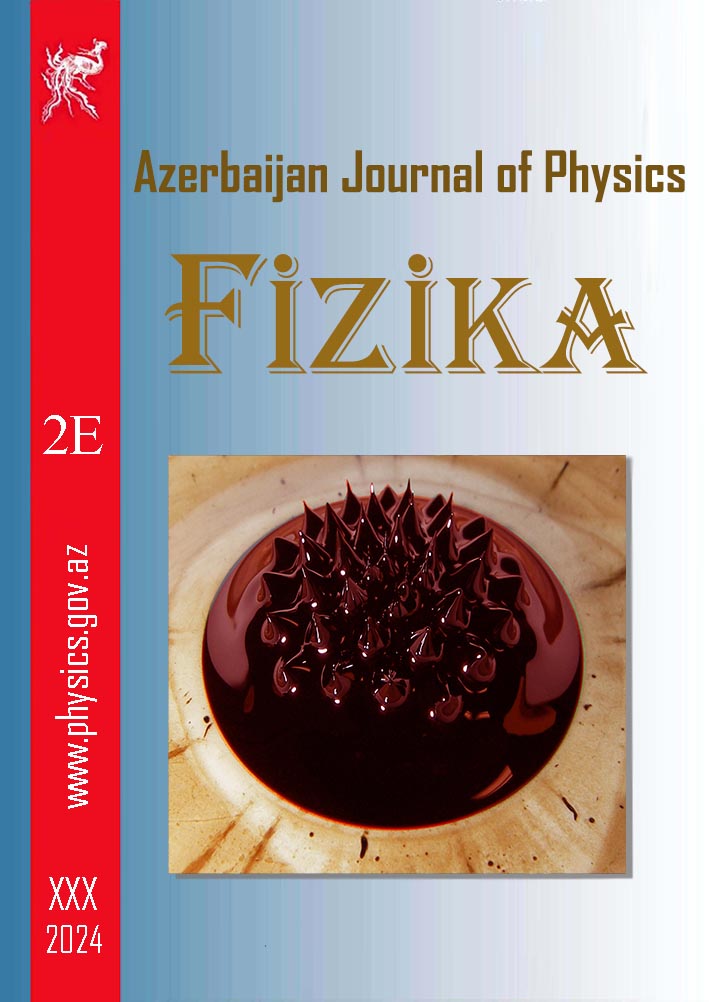ABSTRACT
In this work, we have fabricated Au/P3HT/n-Si and Au/n-Si Schottky barrier diodes (SBDs) to investigate the effect of polymer interfacial layer on the electronic parameters.
Electronic parameters of these two diodes were calculated from the current-voltage characteristics. It was seen that the ideality factor value of 3.47 calculated for the
Au/P3HT/n-Si device was higher than the value of 1.18 of the Au/n-Si Schottky diodes. The high values in the ideality factor are caused possibly by various effects such as
inhomogeneities of polymer interfacial layer film thickness and series resistance Rs. The Rs values obtained from Cheung’s function are 18.6 and 495 for Au/n-Si and
Au/P3HT/n-Si, respectively. Our results show that P3HT conductive polymer can be used in device modification for Schottky barrier diodes or photodiodes.
Keywords: Schottky diodes, conductive polymer, spin coating, poly (3-hexylthiophene)
PACS: 72.10-d; 73.30.+y; 73.40.GK.
Received: 31.01.2020
AUTHORS & AFFILIATIONS
G.M. Abdullayev Institute of Physics of NAS Azerbaijan 131, H. Javid ave., Baku, Azerbaijan, AZ-1143
E-mail: Corresponding author: Hidiyev@gmail.com
|
REFERENCIES
[1] S.M. Sze. Physics of Semiconductor Devices, 2nd ed., John Wiley & Sons, New York, 1981.
[2] E.H. Rhoderick, R.H. Williams. Metal–Semiconductor Contacts, Clerendon, Oxford, 1988.
[3] T. Tunç, İ. Uslu, İ. Dökme, Ş. Altındal, H. Uslu. International Journal of Polymeric Materials, 2010.
[4] F. Yakuphanoglu. Synthetic Metals 160, 1551–1555, 2010.
[5] P. Anuragudom. J. El-daye, P. Chinwangso, R.C. Advincula, S. Phanichphant, T.R. Lee. Polymer International 60 660–665, 2011.
[6] Ahmed Fatime E, OA. Yassin. Microelectron J; 38:834, 2007.
[7] F. Yakuphanoglu. J. Alloys Compd. 494, 451e455, 2010.
[8] N.C. Nguyen. Potje-Kamloth K. Thin Solid Films; 338:142, 1999.
[9] W. Brütting. Physics of Organic Semiconductors, Wiley- VCH- Verlag GmbH & Co. KGaA, Weinheim, 2005.
[10] E.J. Meijer, A.V.G. Mangnus, C.M. Hart, D.M. de Leeuw, T.M. Klapwijk. Appl. Phys. Lett. 78, 2001.
[11] F.Yakuphanoğlu, M.Shah and W. Aslam Farooq. A. Phys. Polonica A 120, 3, 2011.
[12] E. Voroshazi, B. Verreet, T. Aernouts, P. Heremans. Solar Energy Mater. Solar Cells 95, 1303–1307, 2011.
[13] M. Manceau, A. Rivaton, J.L. Gardette, S. Guillerez, N. Lemaître. Solar Energy Mater. Solar Cells 95, 1315–1325, 2011.
[14] O. Güllü, S. Aydoğan, A. Türüt. Microelectron. Eng. 85, 1647, 2008.
[15] S.K. Cheung, N.W. Cheung. Appl. Phys. Lett. 49, 85, 1986.
[16] T. Kilicoğlu. Thin Solid Films; 516:967, 2008.
[17] H.J. Norde. Appl. Phys.; 50:5052, 1979.
[18] H.C. Card. E.H. Rhoderick, J. Phys. D: Appl. Phys. 4, 1589, 1971.
|
